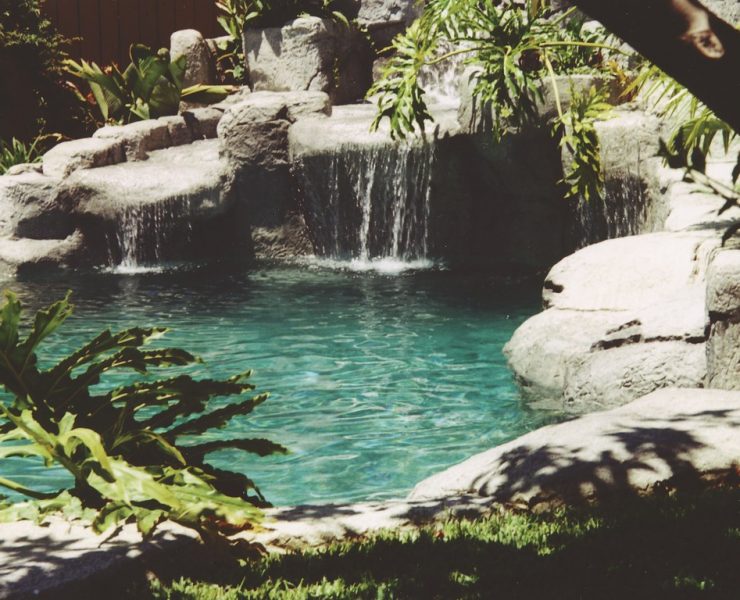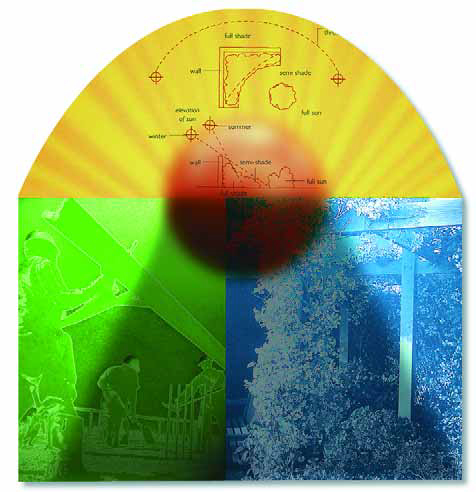More and more of my clients are interested in including edible plants in their gardens. They're into cooking, great food, fine wine and entertaining, and they appreciate the special flavors that come when they grow and harvest their own edibles. It's incredibly satisfying to walk out into one's own garden and pick fruits or vegetables or herbs. Not only do these edibles taste better than store-bought produce, but any gardener can be reasonably sure that the foods they grow are free of pesticides and other undesirable contaminants. No matter what
There's a new wrinkle in this issue of WaterShapes. Just inside the back cover, you'll find "Book Notes," a brand-new column by landscape architect and watershape
The ancient Celts transported huge slabs of stone over long distances to create religious circles at Stonehenge and Avebury. The Romans used stone to build their aqueducts. From the pyramids of Egypt to the Acropolis in Athens, from the Great Wall of China to the great castles of Europe, stone has been the raw material of choice for our greatest and most enduring structures. Through the ages, stone has been a well-used material because it is both durable and readily available. It's hard to find a town in Europe without walls constructed of local stone, and all you need do is drive through
Whether it's done using only a tape measure and a pair of experienced eyeballs or requires the help of satellites orbiting the planet, every construction project is surveyed before the work begins. In fact, surveyors have been plying their trade for thousands of years, and their services have been valued for one simple reason: It's really a good idea to measure the size and shape of the ground before you try to build on it. In today's terms, surveying is defined as the process of taking accurate measurements of the land on the X-, Y- and Z axes (that is, in three dimensions) and then translating that data into a usable (usually printed) format. There are several different surveying methods used to measure, process and communicate this critical information, and choosing the right one is essential to getting any watershaping project off to a sound start. So how do you determine the level of detail required and communicate your need to the surveyor so he or she can give you the appropriate level of information? Let's take a look at the different types of surveys in common use and review what those options mean in terms of creating a truly useful array of
When it's completed sometime in mid-2002, the Mesa Indoor Aquatic Center will be among the premier U.S. facilities for competitive swimming, diving, water polo, synchronized swimming and synchronized diving. Once it's up and running, MIAC will be the country's largest indoor competitive swimming facility owned and operated by a municipality; just as certainly, it will also act for years to come as host to countless world-class aquatic competitions. A project like this
It's something we in the business overlook all too often: Swimming pools, kids and summertime go together. That's why pools have been so enduringly popular, even at a time when watershapers seem to be focusing more than ever before on principles of design and how their work can be artfully integrated into the landscape. I came to building pools from an extensive background in building man-made rocks for theme parks, which has colored my perspective on the way my pools are used. I've also been swimming in backyard pools since I was a kid, and I've built all sorts of rockwork designs for all sorts of
I was deeply saddened when I learned that Jim McNicol passed away in April 2001. He had been struggling with respiratory disease and other ailments for many months - and suffering far more, I'm sure, than he would have ever let on to those around him. He was a disciplined and creative thinker, and with his passing the industry has lost one of its true innovators and most devoted, respected and admired teachers. For those of us who knew him, we have all lost a good friend. I knew Jim for more than 10 years, and he was among the first people we turned to when we were framing WaterShapes' content in its earliest stages. His column, "Things Electric," ran in the magazine's premiere issue in February 1999 and was
I truly enjoy including shade structures in my designs. Whether I'm working with an overhang, an arbor, a loggia, a pergola or some other structure (and, yes, they are all different), I see them as ways to create visual extensions of a house - and wonderful places to enjoy being next to the water. There is, of course, as much art and skill to designing and installing the right shade structure as there is to setting up all of the other features of a great backyard. Done well, a structure that projects out from a house will pull your eye from inside to outside while it provides relief from the sun. Similarly, freestanding shade structures
Summer is arriving, and those 90-degree-plus days are coming with it. Your clients are thrilled to have their watershapes to cool off in, but they can't spend all their time in the water! I've discussed shade structures and shade trees before, and it's an important feature to discuss with any clients whose yard you are designing. But there's more to shade than what you do overhead, and you need to discuss what you'll be planting in those shaded areas. There are two problems here. For the most part, people don't know what to plant in the shade - nor do they






















In Search of Community